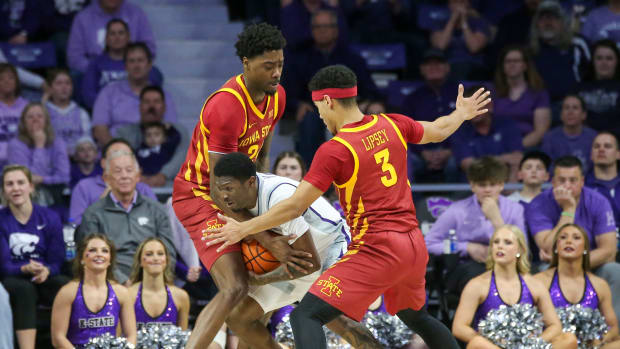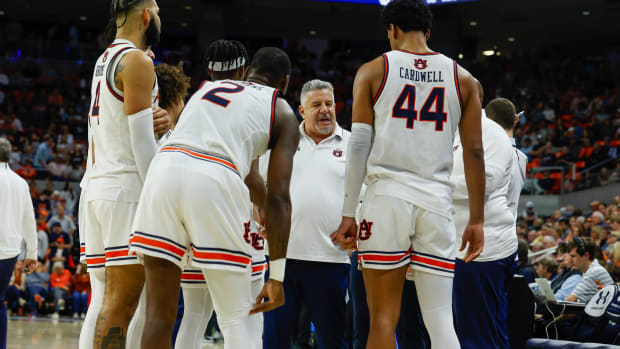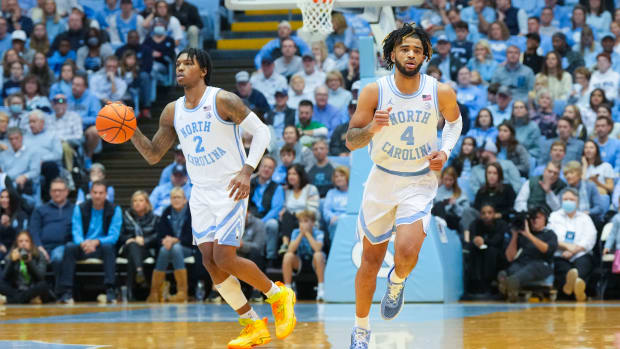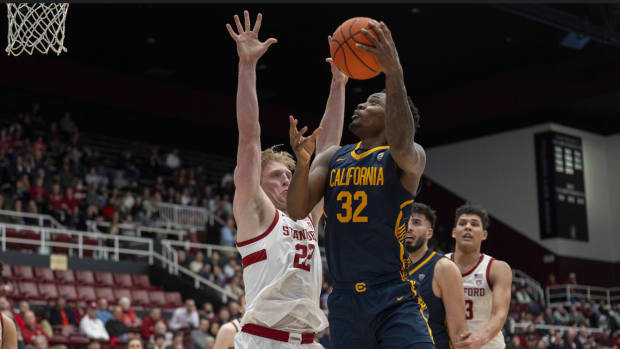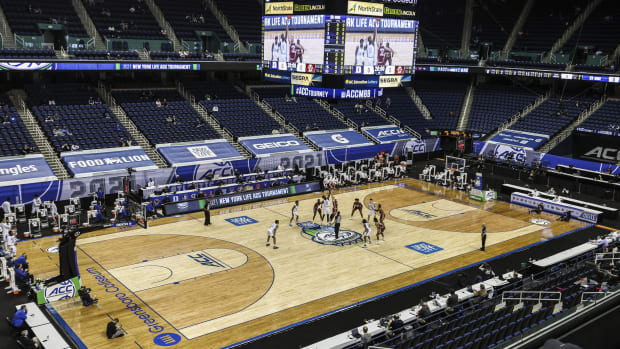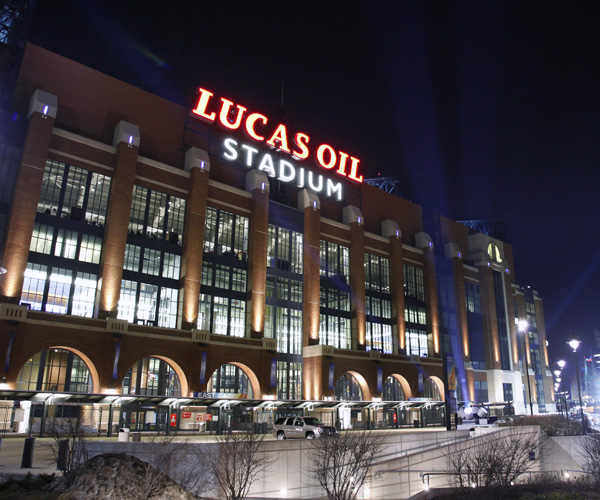
A guide to Madison Square Garden and the other venues of the Sweet 16 and Elite Eight
Lucas Oil Stadium (Photo by Joe Robbins/Getty Images)
Beale Street, Manhattan, the shadow of Disneyland and an NFL stadium will hold all the sweetness and elite play of the NCAA tournament’s Sweet 16 and Elite 8 matchups on Thursday through Sunday.
While the teams remaining in the tournament shrink, the venues only grow, with two NBA arenas, a NHL venue and a full-fledged stadium hosting all the action this week. Here’s the rundown:
FedExForum (Photo by Joe Murphy/NBAE via Getty Images)
FedExForum
Memphis, Tenn.
The NCAA hopes the action inside the FedExForum matches the excitement of downtown Memphis’ Beale Street, a half block from the home of the NBA’s Grizzlies. Seating nearly 18,200 on five levels, including 75 suites and 2,500 club seats, the Ellerbe Becket-designed venue opened in 2004 and has plenty more character than a typical NBA arena.
The round arena features 3,800 aluminum composite panels in patterns of red, silver and bronze and is topped with a silver dome. The look of the 14-acre venue isn’t all round, though, with a large glass atrium lobby offering contrast. Visitors to the atrium also get a peak at the Grizzlies’ practice floor.
The FedExForum, also the home to the University of Memphis, screams Memphis from the inside. From displays, themed concourses, restaurants, murals and even guitar-shaped beams, the interior of the venue is all things blues, jazz, gospel, soul and other styles of music.
Honda Center (Photo by Jeff Gross/Getty Images)
Honda Center
Anaheim, Calif.
Can’t we still call it The Pond? That is how we knew the home of the NHL’s Anaheim Ducks when the Populous-designed venue opened in 1993. Now nearly 20 years later, the Honda Center, which will seat just over 18,000 for basketball, has enjoyed a refresh that includes new HD video boards, updated restaurant space, an expanded team store and a new indoor-outdoor entertainment space dubbed The Grand Terrace.
The adjacent Theatre at Honda Center opened in 2001, but the only theater happening on Thursday and Saturday should remain inside the 650,000-square-foot basketball venue — inside a glass arch entry — with three levels of seating, including 83 luxury suites.
Host to five other NCAA West Regionals, the building has 200,000 square feet of marble — imported from Spain, Taiwan and the Philippines — in four colors lining the interior concourses and walls. Not to be outdone, the 12 feet of granite encircling the exterior was mined in Sweden and fabricated in Italy. But if it is a little taste of Southern California you crave, enjoy the more than 130 palm trees on the property.
Madison Square Garden (Photo by Ben Hider/Getty Images)
Madison Square Garden
New York City
Don’t let the fact that Madison Square Garden is the oldest venue in the NBA — it opened in 1968 — fool you. The arena finished a $1 billion upgrade in 2013 that completely rebuilt seating bowls, concourses and amenities in the heart of Manhattan.
Home to the NBA’s Knicks, NHL’s Rangers and St. John’s University, among others, expect just shy of a 20,000 capacity for the NCAA games. Situated atop Penn Station, Madison Square Garden — which was in three different locations before the Charles Luckman-designed version landed on Seventh Avenue between 31st and 33rd streets in 1968 — now has a Brisbin Brook Beynon Architects redesign with fresh luxury seating, two rebuilt seating bowls (with views of the city), a bounty of new restrooms, a new concourse, new dining options and a dramatic pedestrian walkway over the action below, which also draws fans closer to the famed finished ceiling.
Even with all the renovation, the floor space in the Garden is slightly smaller than that of a typical NBA arena, forcing the NCAA to make its floor’s apron slightly narrower. The NCAA says this isn’t a major issue and is also done to squeeze into Dayton each year.
Lucas Oil Stadium (Photo by Joe Robbins/Getty Images)
Lucas Oil Stadium
Indianapolis
Call it a trial run, if you want. One year before hosting the Final Four, Lucas Oil Stadium, home of the NFL’s Colts, will host the Midwest Regional. The HKS-designed retractable roof venue opened in 2008 and seats about 67,000 for football. While it can expand to over 70,000 for basketball — and presumably will next year — the NCAA says it will keep capacity at 38,620 this week.
While it will obviously remain closed, the long, narrow roof panels stack over the building when the two-panel roof design travels on five rails and creates a 176,400-square-foot opening. To add to the fresh-air options, the venue also has a six-panel north window that opens. On the outside, the reddish-brown brick building features Indiana Limestone, steel and glass to match other downtown buildings in a turn-of-the-century aesthetic.
First done by the NCAA in 2008 when playing basketball inside a stadium, moving the floor to midfield opens up plenty more seating than having the floor tucked at one end. Raising the floor just over two feet, as we’ll see at Lucas Oil Stadium this weekend, provides better views for fans.
Tim Newcomb covers stadiums, design and gear for Sports Illustrated. Follow him on Twitter at @tdnewcomb.




